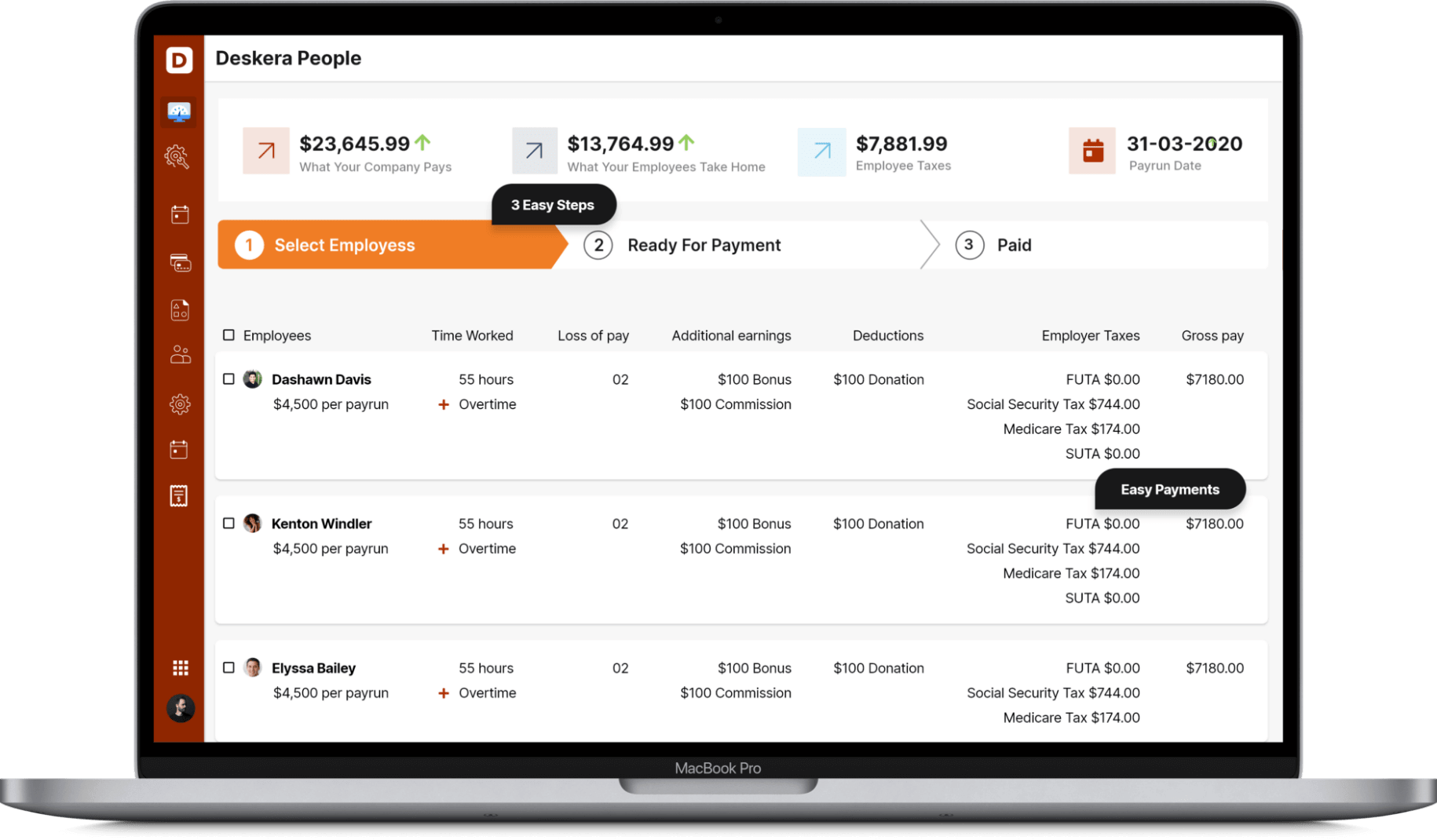Who likes letting go of their employees? In any case, letting go of a problem employee is most certainly easier said than done. Before you fire somebody, you need to ensure you have everything in order and are approaching the process in the correct manner.

Firing somebody too hastily or without following the proper steps could prompt an uncomfortable situation or even lawful issues that could harm your business. Considering that, this article focuses on all the aspects involved pre and post-firing of an employee. Following are the topics covered:
- Things to consider before firing someone
- Reasons for Firing an Employee
- Steps to be certain now is the right time to fire a worker
- Standards to Remember
- How to fire workers
- Illegal motivations to terminate a worker
- Benefits of laying off workers
- Disadvantages of laying off workers
- Key takeaways
Things to consider before firing someone
Have you given them a chance?
In addition to the fact that your organization probably has strategies set up for managing performance issues, it is not out of the question that you allow the worker a chance to improve.
In the first place, decide whether they know about their particular performance problems and what is expected to improve. Have you assisted them with improving or given them the training or preparation they need to improve at their specific job? In the event that you did, what have been the results of your efforts?
Assuming you conclude that there is a genuine chance they can improve their game, you ought to permit them an opportunity to attempt to improve.
In any case, if it’s obvious that without your constant supervision the worker can't do the work to the level of performance expected and required, the time has come to consider firing them.
Reflect
How would you go from having a suspicion you should terminate a worker to knowing beyond a shadow of a doubt? Honestly, assuming you are now already thinking of firing somebody, that is a terrible sign. You're remaining at the edge of the plunging board. You know it in your stomach sooner than your head can catch up.
To get your mind and instinct in total agreement, consider reflecting on a series of questions about how this worker will add to your organization’s future achievement. Envision your ideal team. Is this worker in it? Or think about a situation in which there's an opening at your organization for the role that this worker as of now holds.
Could you recruit that individual? Finally, assuming the individual lets you know they were leaving, what amount could you battle to keep them?
Would they be able to be more effective in an alternate job or different organization?
In some cases, the worker is just not in the right organization or in the right role. Assuming that the worker is new and performance has floundered all along, it may not be totally their shortcoming. Maybe they weren't an ideal choice to get everything taken care of and ought not to have been hired in the first place.
The following step to consider is whether they could prevail inside your organization in an alternate position with various responsibilities. Assuming they can be moved into a place that appears to be a superior fit for their abilities and capacities, try that first.
Assuming performance has wavered after some time, maybe something about your performance expectations has changed and they are essentially not ready to keep up. On the off chance that you have allowed them the opportunity to adjust and measure up to these new expectations however they are not succeeding, it could be an ideal opportunity to consider firing them.
Consider the main driver
It's likewise essential to contemplate the underlying driver of the workers' terrible performance. Maybe the worker would be more qualified for an alternate position. Perhaps another worker is hassling them. Does this individual completely see their responsibilities as a whole? It may be the case that an associate is unloading additional work on that worker, making their own work suffer.
Contingent upon the reason for the worker's conduct or performance, there might be different choices than firing. Is there insufficient management? Are expectations not clear?
Understanding the justification for your workers' under performance is basic for deciding how you'll move toward the issue. It may not be anybody's shortcoming in essence. Taking care of the issue could work on the worker's performance or eliminate the issue behavior. It's critical to converse with the worker to figure out what is the deal with them. Like that, you can stay away from a hurried choice to fire them.
Maybe, the worker had been progressing admirably, but since of moving business needs or changes in innovation, the worker's range of abilities is not generally required. Or on the other hand, perhaps, the job has outgrown the individual, and your worker isn't prepared for what you require.
Of course, you could have quite recently employed some wrong individual. It's justifiable for what reason that is hard to swallow - terminating somebody you employed makes you question your judgment. However, if so, it's vital to claim the misstep and immediately bid farewell.
Is managing them diverting you from other significant things?
While dealing with your workers is an aspect of your responsibilities, on the off chance that you are investing a lopsided measure of energy with an under performer, you are disregarding your different responsibilities.
Contributing time attempting to help an under performer is a burn-through when they show no improvement over the long run.
In this way, rather than burning through a lot of your important time attempting to set up a poor performer, continue on and recruit another person who is more qualified for the role. The extra time you spend meeting and preparing a more fit substitution will be worth the effort over the long haul.
Indeed, even with severance costs to cover the effect on the worker you're terminating, it is less expensive, over the long haul, to fire them and get somebody who can perform without draining your time and energy, the two of which can be better used to additionally foster successful workers who add to your company's success.
Accumulate enough information
Most managers want to feel as they've given their very best possible to settling on the choice to terminate a worker. So in the event that you feel like the worker is motivated and coachable, it tends to be useful to accumulate more information prior to settling on an ultimate conclusion. Carrying out a development plan - not to be mistaken for a PIP - focused on "three or four areas that the individual need to invest time in.
The plan should likewise incorporate how you'll gauge their development in those aspects. Let's say, for example, that your worker's main issue is that they don't function well cross-functionally in spite of having some work that requires it.
You need to work with this individual to recognize exercises that would assist them with building connections -, for example, engaging in various undertakings, joining an advisory group, or going to a cafe with partners.
Then, set boundaries for your assumptions. Contemplate a sensible time period wherein this individual could get to the next level. Let them know that you'll check in half a month to see how things are going. Offer your help. Ask them what help will they really need from you.
Would you be able to make introductions for them? Would you be able to assist them with finding a mentor who's great at networking? Your point is to be intense yet empowering. Acknowledge that it will be a bit challenging. What's more, strike a fair certainty that the individual will accomplish the objectives.
Reasons for Firing an Employee
Contingent upon where your organization is located, you might require a reason for terminating somebody. A few states are at-will employment states, and that implies that anybody can be terminated under any condition.
Be that as it may, it's not regularly a decent business practice to fire somebody for not a glaringly obvious explanation. However, what is viewed as a valid justification to terminate a worker?
Inability to Improve
On the off chance that a worker isn't performing up to the standards expected for their role, you might consider telling them and terminating them. Give feedback and training when needed and offer the workers chances to correct their missteps, whether they're creating low-quality work or behaving badly in the work environment.
It's the point at which no improvement is made or when the worker cares very little about further developing that you might think about terminating as the following stage.
Poor performance can incorporate an absence of productivity as well as low-quality work. Poor job performance is a sensible and lawful reason to fire somebody. Prior to choosing to terminate the worker, it's critical to give ample warnings and let them know what your expectations are so they have the valuable chance to improve.
While you actually can terminate a worker without making these steps, doing as such can diminish worker morale. If a poorly-performing worker isn't improving, in spite of opportunities and corrections to do as such, that can influence the efficiency of your other workers also.
On the off chance that one worker neglects to finish their part of a project or doesn't give required data to associates in a timely fashion, the productivity of the whole office can fall. Ridding the organization of the ineffective worker will offer you the chance to replace that person with somebody who will do the work right.
Criminal Behavior
Theft is unlawful, regardless of whether your worker brings a box of erasers back home from your inventory storage closet. All things considered, working environment theft is normal, so you probably will need to just fire people who pilfer costly things or property that addresses an incredible expense for your business.
Theft, whether it's from the organization or from different workers, ought not to go on without serious consequences. Any way of behaving that way is illegal can be viewed as a fireable offense.
Assuming any worker that violates the law is kept on the payroll, it will reflect poorly on the organization, in the event that does not bring about the organization being expected to take responsibility for that criminal behavior.
Additionally, certain instances of organization property misuse - for instance, extensive use of organization PCs for personal purposes during work hours or any amount of organization PC used for ethically questionable or illicit purposes- might be a fireable offense.
Assuming a worker damages organization machinery, PCs, or office space that outcomes in critical monetary or operational consequences, you can fire them.
Infringement of other company policies
While a violation of organization policies can justify terminating, consider cautiously prior to dismissing workers thereafter. Assuming your worker violates your social media policy by posting something that could radically hurt your organization's public picture, you can justify terminating them.
Nonetheless, assuming your worker checks their personal social media accounts during work hours, that is not a severe enough infraction for excusal. All things considered, delicately help the worker to remember the dismissal.
On the off chance that they keep on doing as such after your advance notice, more drastic actions might be warranted.
Organization policies are there for a reason. Assuming a worker is breaking organization policy and keeps on doing as such after warnings, that can be justification for termination. Workers ought to be very much aware of organization policies and rules, which ought to be clarified in an employee handbook.
Harassment
Harassment, whether it's sexual or racial, or any sort of harassment, is unsuitable in the working environment. A worker who is harassing others under any circumstance is influencing the morale and productivity of the entire office. Specifically, those impacted by the harassment might be experiencing pressure or uneasiness that can influence their well-being and productivity.
Workers who physically harass or in any case victimize an individual worker are normally subject to a quick termination. So are workers who ignore work environment security policies or bully their co-workers. It's additionally acceptable to quickly terminate workers who are violent or threaten violence toward different workers.
Apathy
An apathetic employee is definitely not a useful worker. Apathetic workers aren't motivated to work well or gainfully for the organization. Their work might suffer and may not depend on the standards expected for the role.
Excessive absence
It's fine for a worker to take an occasional vacation or day off. Yet, they shouldn't continually show up later than expected or rarely work a full week. Assuming a worker is regularly late to or absent from work or takes extended breaks, that is something that can't be left neglected. Workers that are frequently absent are similarly questionable.
Maybe they call in sick too frequently or use up their allotted vacation time too early in the year. These are signs that the workers might generally dislike participation. Excessively absent workers keep your organization from fulfilling time constraints and objectives - extreme absence is an adequate reason to fire somebody.
Your different workers will notice the way of behaving and, best case scenario, accept their coworker is untrustworthy. To say the least, they might accept the organization is implicitly reassuring such a way of behaving by neglecting to address it.
This could make productive and timely workers lose efficiency and morale and even consider moving to an organization that didn't permit such an awful way of behaving.
Insubordination
Assuming workers are insubordinate, that can reason for the fire. An insubordinate worker makes a manager’s work more difficult and can influence their manager’s capacity to actually deal with their team. Declining to follow a manager's directions, so long as the request is lawful and sensible, can be viewed as insubordination.
Unethical behavior
Unethical behavior includes infractions like misrepresenting organization records, lying about work assignments, and hiding data that could, whenever uncovered to the general population, lead to disastrous public relations.
It might in fact incorporate expressing strong, disagreeable political stances inside or outside the working environment. Any case of unethical behavior, regardless of how extreme, is justification for terminating.
The Employee Is Affecting Office Morale
Whenever a worker's way of behaving or absence of hard-working attitude influences different workers, a sign now is the ideal time to terminate that worker. Assuming one worker can cut down the confidence of the whole office, division, or even organization, and the way of behaving hasn't improved, then, at that point, it's the ideal opportunity for that worker to go. Different workers will thank you for it and will be more joyful, not so much pushed, but rather more productive for it.
At work drug or alcohol use
It's a certain thing assuming your worker has a glass of alcohol at the organization holiday party. It's another in the event that the worker is so inebriated they can't play out their work capacities. Workers who are inebriated in work settings ponder inadequately your organization as well as represent a risk. Drug and liquor use in the workplace, at a work site, or at a work is a substantial motivation to fire somebody.
Scaling down
While termination due to scaling down or budget cuts is frequently grouped separately from terminating, it is a legitimate justification for worker dismissal. On the off chance that you want to release workers, it's affable to give them an adequate notification. The government Worker Adjustment and Retraining Notification (WARN) Act requires specific businesses to give notification ahead of time of layoffs.
Deluding job application
A Checkster study discovered that 78% of job candidates lie on their resumes. Assuming you discover that a current worker's resume contained fabricated data when they were employed, you can terminate them.
In any case, assuming the worker exaggerated a few minor capabilities and is doing their job well, you might need to think long and hard about terminating them.
Poor culture fit
A poor culture fit could mean numerous things. Perhaps your worker is continually negative. Perhaps they don't focus on their work or have the energy for it. Perhaps they're continually making jokes, conversing with their co-workers, or in any case diverting your group. These are all acceptable reasons to fire somebody.
Steps to be certain now is the right time to fire a worker
1. Recognize the gaps.
That is always stepping one: Once you notice a worker is battling, decide un-biasedly where they are missing the mark.
Doing as such is critical in light of the fact that the main way the worker can address ways of behaving or improve performance is to comprehend where they are coming up short. And the only way you can analyze improvement is by knowing the exact thing you hope to see.
Thoroughly consider things. Rattle off what's not working and what you might want to see all things considered. Ensure your asks line up with your organization's objectives and values.
2. Set expectations.
When you comprehend what you expect, ensure your worker knows, as well. Have a forthright discussion to tell them you've seen these gaps. Where you can, give guidance or counsel to assist with getting them in the groove again.
Furthermore, ensure workers know that while you treat the matter in a serious way, you additionally want them to succeed.
3. Give formal re-training.
On the off chance that performance gets worse, decide whether extra preparation and training will help. Assuming this is the case, consider presenting a performance improvement plan or PIP. The arrangement can focus on the gaps you distinguished before.
4. Make a timetable.
Most new representatives come up to speed within a little time. Set targets, yet in addition set timetables. Not exclusively will you make an urge to keep moving, you'll likewise crystallize expectations and maintain reasonable documentation.
5. Record everything.
Except if a zero-tolerance infringement has happened, deciding when to terminate a worker is the aftereffect of a process whose means ought to continuously be explicitly stated.
Where the underlying gaps are concerned, record everything: performance plans, extra resources, the discussions you have with the worker everything.
Documentation can assist you with being certain that you allowed the worker each opportunity to succeed-and it safeguards your business on the occasion the worker later feels unreasonably treated.
6. Follow up.
Consider this stage to be a basic, repeatable process:
- Share ongoing performance results.
- Detail areas for improvement
- Offer to give assistance, preparing, and so forth
- Set a date for the following check-in
So, don't simply communicate the upgrades required. Communicate the process for assessing performance, deciding the following stages, and what activities might be vital later on.
7. Follow up once more.
That is particularly significant when you're on the fence. During the performance improvement period, a few workers will irregularly fulfill standards. Some will even, incidentally, accomplish extraordinary work. However, at that point, they'll return to their sub-standard mean.
As an entrepreneur, you lack the opportunity to effectively oversee worker performance. You can't afford to sit around idly consistently pushing and nudging conflicting entertainers. You really need self-starters. You really need workers energetic for greater responsibilities, greater power.
You really need workers eager to accomplish more-not less. Assuming you end up going back and forth about a worker, that is quite often a sign that you want to roll out an improvement. Furthermore, to do it the correct way.
8. Be ready to describe the following steps.
Whenever you want to terminate a worker, dealing with the termination both professionally and lawfully is significant. Furthermore, doing so with empathy, permitting the worker to keep up with as much pride and respect as could reasonably be expected, matters considerably more.
Explain when and how a fired worker will accept their last check. Clarify how advantages are impacted and when they will end. Clarify how personal property can be recovered and organization property can be returned.
Standards to Remember
Do:
- Be straightforward with your worker about your concerns.
- Consider your company's future business needs and whether the worker is referred to has an important range of skill set.
- Attempt to comprehend the main driver of the under performance - it will give you valuable data that will help with your choice.
Don't:
- Depend solely on your own observations; look for input from trusted coworkers.
- Leave HR with regard to the process - look for their input and advice on your decision
- Dawdle whenever you've settled on the decision to fire. The expense of dawdling is high for everybody.
How to fire workers
Business News Daily asked HR specialists and experts for their best advice on terminating workers. These tips should make the process somewhat more straightforward.
1. Offer the worker the chance to improve or leave first.
Understanding that you've made a bad recruit, or that the applicant you had high expectations for is not exactly enthused with their present position, is intense - particularly for small businesses. Despite the fact that it might appear to be simpler to cross your fingers and hope it gets better, in all actuality you really need to take control of the situation.
The best thing to do is have a discussion with this individual and express your concerns. Offer them the chance to acknowledge on their own that maybe this isn't the most ideal fit. In certain cases, after that discussion, the worker might quit on their own.
In the event that you have a worker who isn't performing great, attempt carefully and deferentially discussing these difficulties with them in private without referencing anything about discipline or terminating. At times, the worker might agree with your evaluations and leave on their own.
2. Get everything all together ahead of time.
Practice what you intend to tell the worker and have all the necessary documentation all together with the goal that you can make the process as smooth as could really be expected.
Assuming you're afraid about the possibility that your nerves will disrupt everything, write down a couple of arguments. At least, you'll have to explain the process for the worker about leaving the company, returning organization owned things, how long advantages will proceed, and so on
3. Pick a proper time and place
Plan the date, time, overall setting, and place - toward prior in the week, and never on Friday. Do it during lunch or at some other point when business impacts are limited. Meeting rooms are great spots. Figure out a meeting time that permits the worker to collect their things carefully, out of sight from other workers, quickly a short time later.
4. Try not to rush into the meeting.
Ensure that you have somewhere around 15 minutes before the meeting to unwind and get clear about your goal. Write a script for what you need to say. Layout your purposes behind terminating them, whether this is a direct result of a one-time offense or a series of long-haul infractions.
However, ensure the reasons aren't ways of behaving for which you're letting other workers free. Your script should express that the decision is conclusive and not quite possibly you will alter your perspective.
5. Focus on the law and the facts
While terminating a worker, you want to focus on specific facts and not attack the worker personally. You likewise need to adhere to regulations specific for your region for notice and, in certain occasions, severance pay.
Plan an adequate measure of time to put forth your perspective and for your worker to clarify some things - maybe something like 10 minutes total. Assuming they seek clarification on some things, keep your responses short and on point.
6. Safeguard your business.
Archive, report, record. Without appropriate documentation of organization rules, position prerequisites and expectations, infractions, and disciplinary arrangements, you will lose most claims.
7. Try not to go it single-handedly.
Try not to terminate a worker alone, a terminating is what is going on, thus no one can tell how somebody will respond. Preferably, a colleague, direct manager or HR worker should be available to keep issues quiet in the event that the worker ends up being furious or disturbed.
It definitely should have an HR delegate present during the meeting. On the off chance that you don't have committed HR staff, simply ensure you have another person you confide in the room with you while the termination happens. Having someone else in the room is additionally significant on the off chance that the fired worker makes any legitimate cases about information exchanged in the termination meeting.
8. Try not to allow it to be a shock.
Termination should never shock a worker. The worker ought to have been getting consistent and continuous feedback from the executives from the beginning. At the point when a worker is taken off guard and doesn't have any idea and expect that termination is imminent, that's when lawsuits emerge."
9. Be consistent.
Be certain your choice to fire is consistent with your past way of behaving and practices. Terminating someone today for being late to work multiple times while you didn't fire someone else for a similar way of behaving is a warning.
10. Keep it short.
Terminating somebody is never lovely, no matter what the explanation. Its' generally prescribed to be undaunted with your choice, clear with your reasons and brief with your communication.
11. Try not to make up excuses.
It's alright to fire somebody who just doesn't find a place to fit in with your organization, and who never should have been recruited in the first place. Try not to get sucked into attempting to build a case on nonexistent performance issues. Be straightforward. This business relationship isn't working for any of the parties in question, and it's ideal to end it in the near future.
12. Keep it private.
On the off chance that you in all actuality do have to terminate the worker, permit the individual to leave with poise. Try not to make the worker empty out their work area in front of coworkers, for instance. Sort out for night-time or Saturday packing.
On the off chance that a worker is certifiably not a fit for your organization's way of life, be thoughtful about it. Try not to affront the worker - in light of the fact that they don't accommodate your organization's culture doesn't mean they won't fit in somewhere else.
Moreover, in the event that a worker is performing inadequately, don't say they're awful at their specific job or affront their insight. Illuminate them that their performance doesn't meet your expectations.
13. Assign somebody to accompany the worker out.
At the point when you fire a worker, you'll have to recover any organization materials in their ownership. That implies keys, ID cards, work PCs and that's just the beginning. Change all organization programming passwords that the worker has access to.
Have somebody with them while they pack their own things, and afterward have that individual collect keys and their staff ID card and escort them out of the building.
14. Ensure it's them, not you.
Do a self-assessment. Assuming you've come to the heart of the matter of terminating somebody, it's an extraordinary chance to assess your employing, supporting and creating processes. Is this an example you're seeing? Assuming this is the case, you want to address the underlying drivers of your talent management issues.
15. Assuming you're making layoffs, give workers time.
Assuming you realize that you will have layoffs in 60 days, let your workers know following a month and give them the two months as severance. In the event that you want key individuals to remain for a particular time frame, give them a reward prize for proceeding to produce until a set time.
16. If pertinent, give and explain severance benefits.
Assuming your organization offers severance pay or COBRA protection to terminated workers, explain how the worker will get these advantages. Be clear about when the workers can hope to be paid their last wages - you should pay for every work done, regardless of whether it's of low quality.
Assuming the worker should consent to any nondisclosure agreements, have them do as such prior to leaving.
Illegal motivations to terminate a worker
When confronted with a decision to terminate a worker, ensure you're on the right half of the law. Assuming that you're in uncertainty, counsel a lawyer.
To ensure the termination is performance-inspired over another reason that might penetrate work or termination laws, pose yourself these inquiries prior to pushing ahead:
- Is the worker neglecting to satisfy work expectations? You really need a valid reason behind why you're terminating a worker. In the event that they aren't staying aware of their obligations or squeezing into the organization's culture, there might be cause for the termination.
- Was the worker carefully guided adequate time and clear instructions to improve? It's vital to give the worker sufficient opportunity and heading to address their actions before an organization pushes ahead with a termination.
- For how long has the worker had a poor job performance? Assuming a worker has had a couple of infractions on their performance, that is not a sufficient reason to terminate them. Everybody commits errors; in any case, repeat occurrences of poor performance after various meetings, probation periods, and more are a reason to worry.
- Have I documented these issues and informed a worker of their poor performance? Think about termination subsequent to informing the worker; if not, they won't realize the reason why they're getting alerts. Recording the issues on paper and electronic communication, for example, email is an HR best practice too - assuming that the situation ends in termination, presently there's documentation of proof and final alerts.
There are completely unlawful and impermissible reasons to terminate somebody, even in circumstances of voluntary employment.
- Immigration status: As long as a worker can legitimately work in the United States, you can't terminate them because of their immigration status.
- Retaliation: You can't terminate workers who threaten lawsuits, whether for supposed discrimination, working environment safety violations, or different reasons. You additionally can't terminate workers who don't comply with illegal requests.
- Discrimination: You are overstepping government regulation on the off chance that your terminating practices are biased.
- Refusal to take lie detector tests: In many cases, your workers reserve the privilege to decline lie detector tests. Refusal to step through these examinations is definitely not a fireable offense.
Benefits of laying off workers
- It can settle your business for future development.
- It decreases work costs, setting aside your business money in the quick-term.
- You can agreeably part ways in different directions from workers and keep a positive reputation.
- It offers workers a clean break, with no ambiguity concerning their business status with your organization.
Disadvantages of laying off workers
- It can diminish your organization's production capabilities.
- Firing, selecting, and recruiting workers is costly assuming you later observe you really want a bigger labor force once more.
- Laid-off workers could document lawsuits or claims against you for unjust termination.
- It can diminish organizational morale and increment the risk of worker burnout.
How Deskera Can help You?
Deskera People provides all the employee's essential information at a glance with the employee grid. With sorting options embedded in each column of the grid, it is easier to get the information you want.

Key takeaways
- While gauging any of the above explanations behind terminating a worker, the seriousness of the incident might decide if termination is valid. In certain examples, you might be inclined to give a written warning as opposed to firing the person's employment.
Regardless of justification, you might be best served by discussing the situation with your lawyer before you fire a worker to ensure you're not at a legitimate risk for an improper termination claim.
- The most well-known explanations behind terminating somebody are property damage, poor performance, misleading or unethical behavior or statements, or infringement of organization policies.
- Making the right steps can bring about rescuing an under performing worker. In the event that not, those same steps will permit you to feel positive about your choice, both from an individual and legitimate point of view, that now is the ideal time to release the worker.
- Whenever you've settled on a choice to terminate, it's critical to act quickly. There is an expense to procrastinating. Your credibility is in question. The group sees you slowing down, it appears as though you don't dare to settle on a difficult decision.
Related articles













